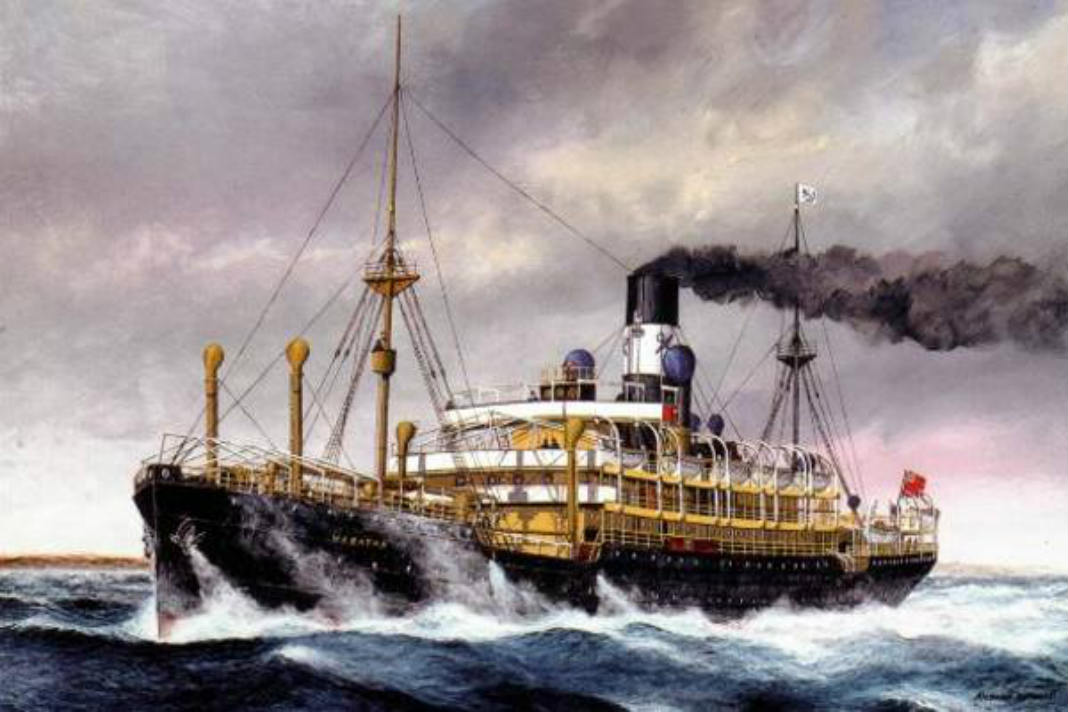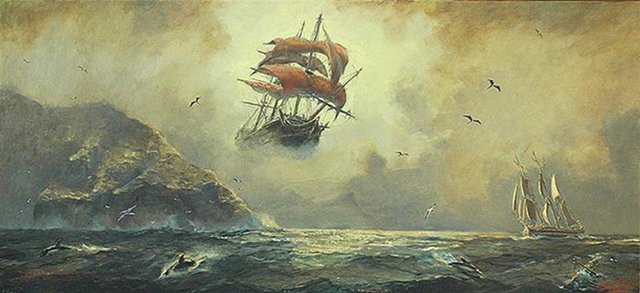S.S. Waratah lost without trace: A cursed name, prophetic dream & ghostly omen
This an abridged version of an article on my website weirdaustralia.com.
One evening in July 1909, passengers aboard the steamship S.S. Waratah waved goodbye from the decks to family and friends lining Durban’s pier amid shouts of “Bon Voyage!”
“Take her to sea!” ordered Captain Joshua Ilbery from the foredeck. A tug steered the Waratah safely out of the South African port into deep water.
The 211 passengers and crew of the S.S. Waratah would never be seen alive again.

The mysterious disappearance of the S.S. Waratah is as bizarre as it is tragic. But it appears the Waratah was doomed from the start. The experienced captain had an uneasy feeling, the name of the ship itself appears cursed, a passenger jumped ship in Durban following a prophetic dream and a distinguished captain would later testify that shortly after being the last to see the steamship afloat, he witnessed a ghostly omen – the Flying Dutchman – sailing in the direction of the doomed vessel.
S.S. Waratah … the Titanic of the Southern Ocean
The luxury passenger and cargo steamship S.S. Waratah, sailed its maiden voyage from London to Australia on 5 November 1908 under the command of Captain Joshua Ilbery, a 69-year-old captain with 30 years nautical experience under his cap.
At 150m long and weighing 9,339 tons, the Waratah boasted 8 state rooms, 100 first class cabins, saloon and a luxurious music lounge. With its role in bringing emigrants to Australia from Mother England, the cargo holds could be converted into dormitories capable of housing 700 steerage passengers. She had lifeboats for 921.
When not carrying the expectations of those looking for a new life down under, the Waratah could carry 15,000 tons of cargo and coal in her separate watertight compartments … similar to those built into the unsinkable Titanic.
She would soon share another fateful connection.
The Waratah curse
On 16 December 1908, Adelaide’s Advertiser explained that the steamer: “ … has been named after the gorgeous waratah, of New South Wales, a magnificent scarlet blossom indigenous to that State.”
The article failed to mention, however, the tragic history of ships that had previously taken the name of that “magnificent scarlet blossom”.
In 1848, a Sydney-bound sailing ship named Waratah sank off Ushant, with 13 lives lost.
In 1887 not one but 2 ships, each named Waratah, sank off Sydney within months of one another.
Following a cyclone in 1889, the newly-built Waratah from Freemantle, sank off Cape Preston in the Pilbara, taking all hands with it.
And just 5 years later, yet another vessel named Waratah was lost in northern Australia.
Jumping ship following a prophetic dream
At least one passenger perhaps had a sense of the curse of the Waratah. Claude Sawyer, a seasoned ocean traveller, held reservations about the seaworthiness of the Waratah. Following a prophetic dream, he scampered down the gangplank, suitcases in hand, as soon as the ship docked at Durban.
Sawyer’s prophetic dream was later recounted in the Daily Observer:
“He dreamt of standing on the ship’s boat deck staring into the sea. Suddenly, a knight on a horse rose out of the waves swinging a medieval sword. A bloodstained sheet was fluttering behind him. The apparition screamed out ‘Waratah! Waratah!’ then faded. Sawyer woke up screaming. He couldn’t sleep after that but resolved to get off the ship at the next stop.
“The following day, he related the nightmare to Alexandra Hay, a lady from Coventry, England, who was making the crossing with her daughter. While she was shocked by the story, Mrs. Hay was not going to change ships. Convinced that the Waratah was doomed, Sawyer next pleaded with his bunkmate, John Ebsworth, a solicitor on his way to London to defend a client, to get off the liner with him at Durban. While he agreed it was perhaps a portent, Ebsworth suggested he discuss the premonition with Father Fadle. The South African priest scoffed at Sawyer’s claims.
“Sawyer repeated his concerns to Ilbery, however, the captain saw no merit in them or this strange dream.”
Waratah vanishes without trace
After leaving Durban, the Waratah headed south along the Transkei coast for Cape Town. With the sky clear and headwinds increasing, Captain Ilbery anticipated reaching Cape Town in 4 days.
The Waratah was spotted by the freighter Clan McIntyre as it passed. The Clan McIntyre kept sight of the Waratah for several hours after passing. The seas were now rolling, producing whitecaps but visibility was improving.
The Waratah pulled about 10 miles ahead of the Clan McIntyre, which recorded in her logs that the Waratah “appeared to be perfectly upright and to be in no difficulty, steaming rapidly”.
The Waratah picked up speed and disappeared from sight into the mist. What happened after that remains a mystery to this day.
The Flying Dutchman, a ghostly omen
The Clan McIntyre’s distinguished and respected captain, C.G. Phillips, would later tell an inquiry into the loss of the Waratah of experiencing a ghostly omen shortly after losing sight of the steamer.
“Some hours after I had sent the signal to the liner [Waratah], I was standing on the bridge when I sighted another ship, a sailing vessel. There was something strangely old-fashioned about her rig. I’m not a superstitious man but I know my seafaring lore. The rig of the vessel immediately brought to mind the legend of the Flying Dutchman … the phantom ship held me spellbound. It disappeared in the direction taken by the Waratah, and I had a feeling it was a sign of disaster for the liner.”

It was.
For more on this fascinating story, including attempts by clairvoyants to solve the case and several stories of would-be passengers who literally missed the boat, read the full story here.
This is an abridged version of an article written and published by myself on weirdaustralia.com.